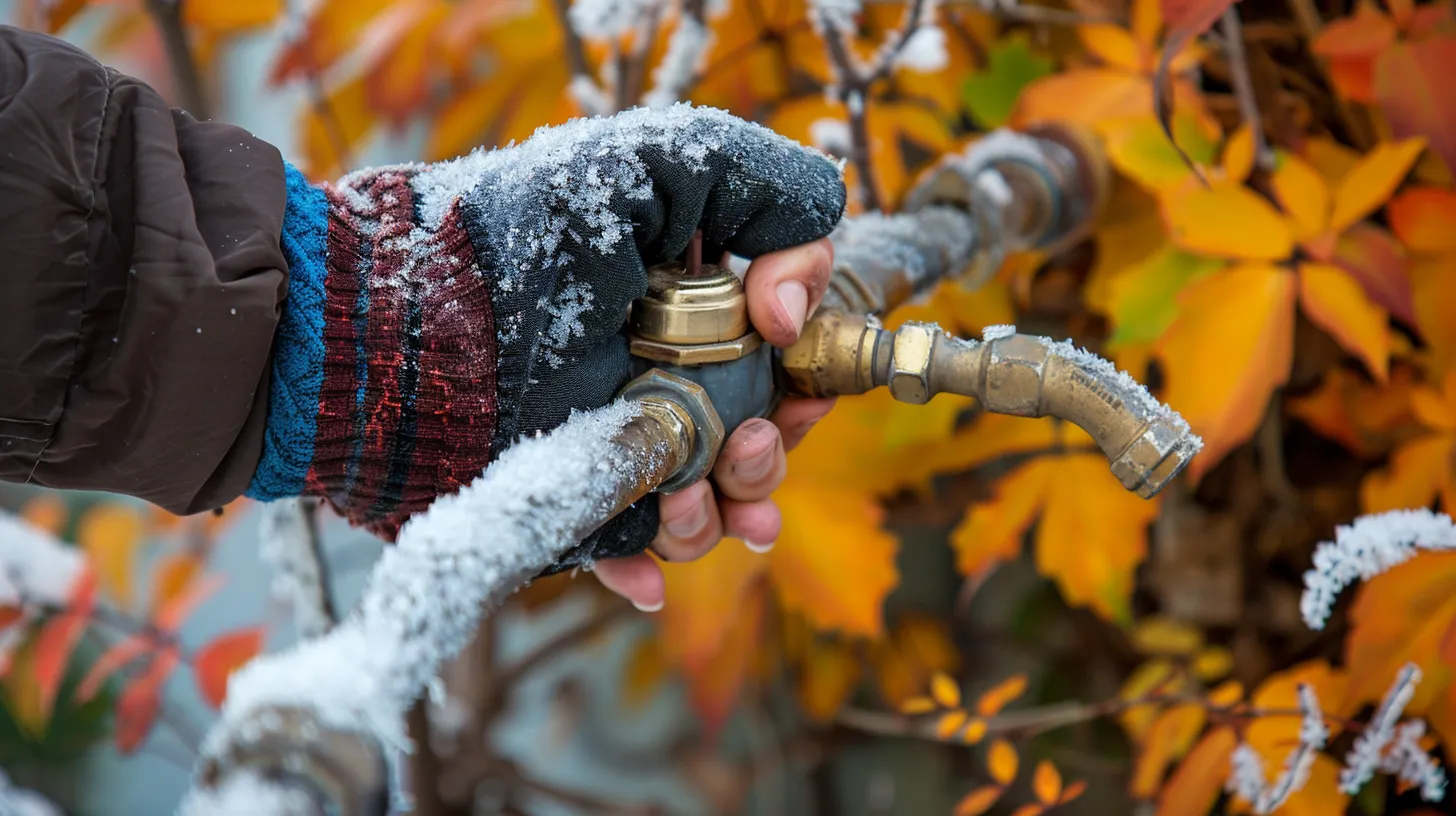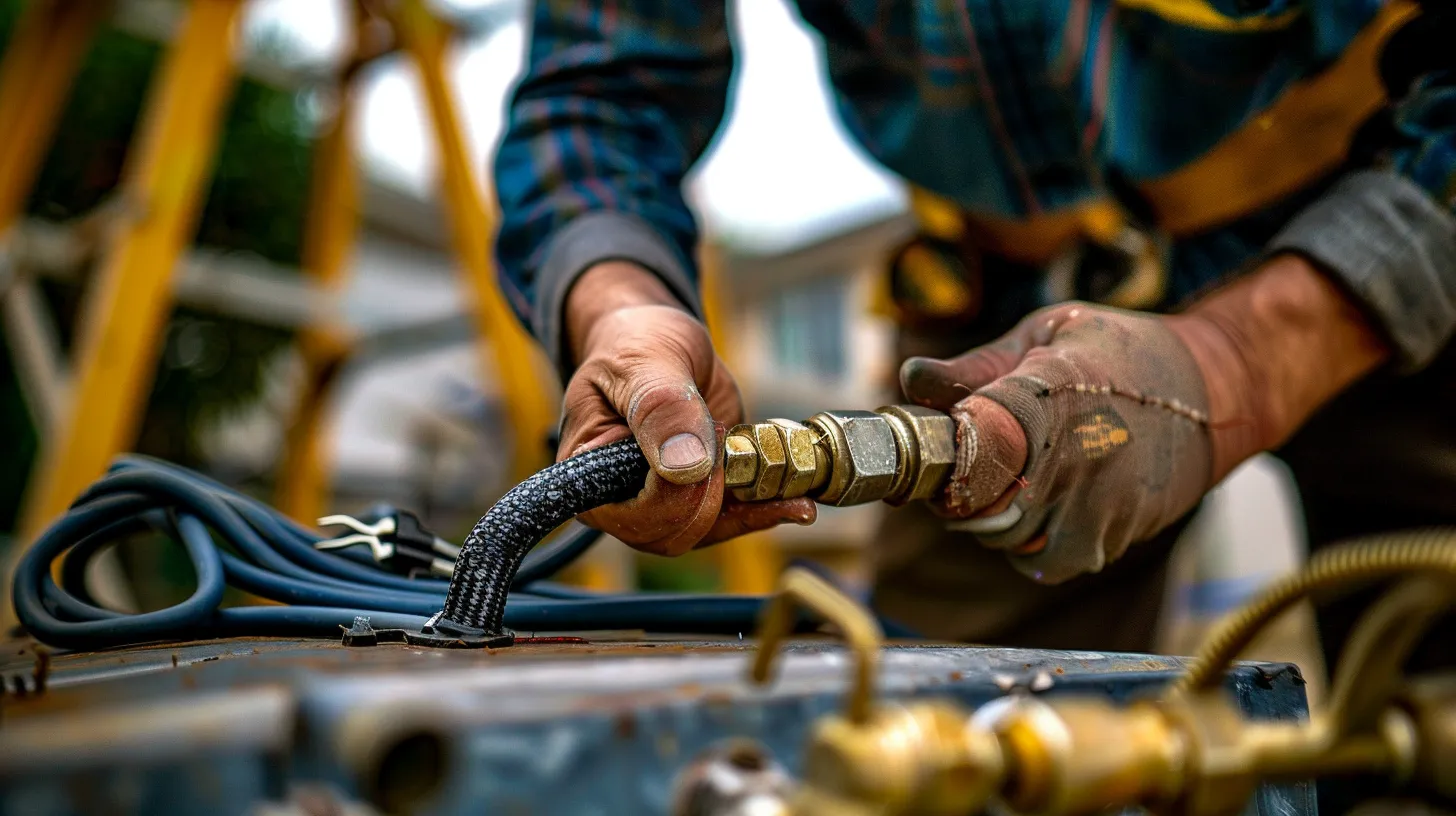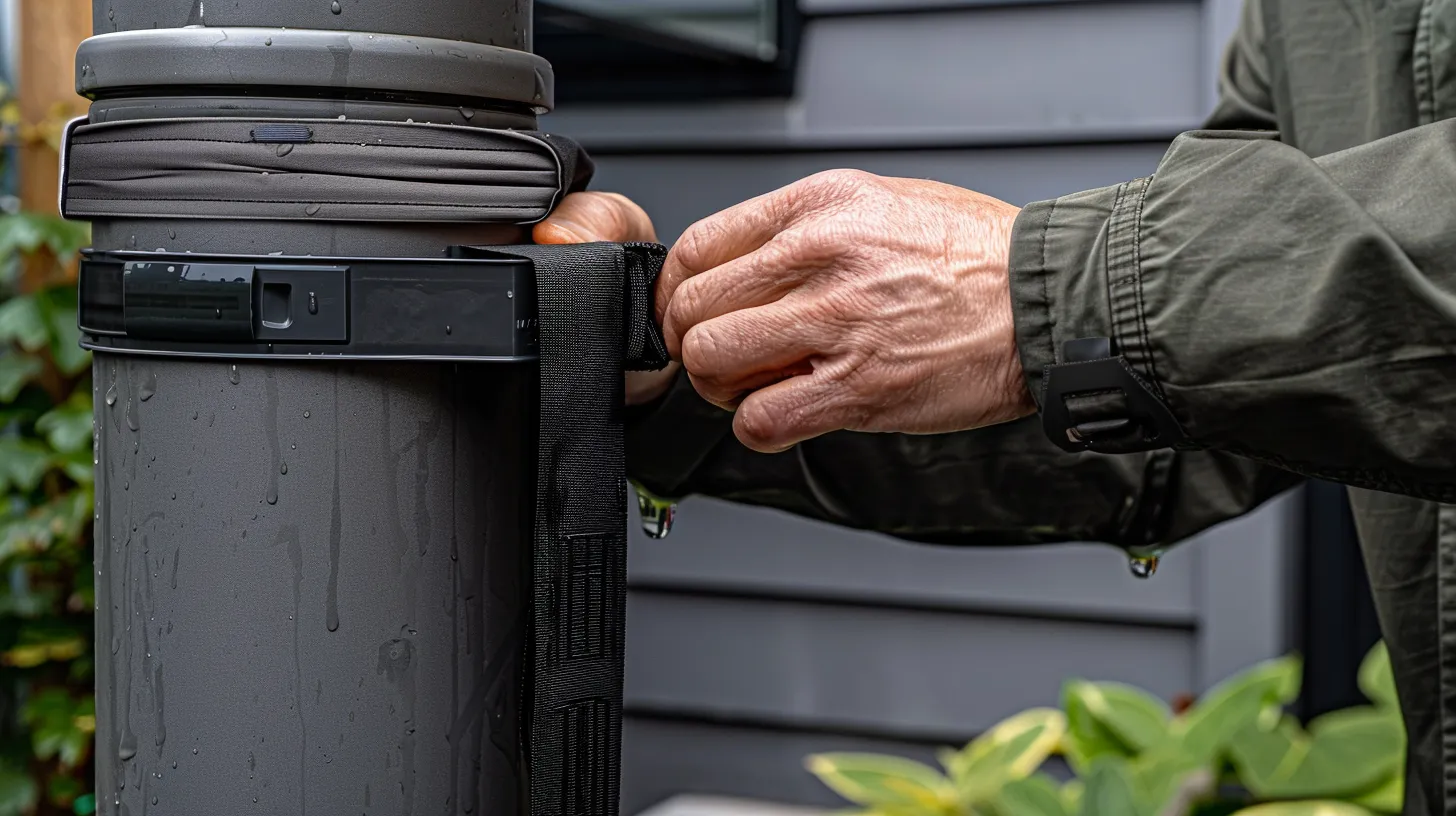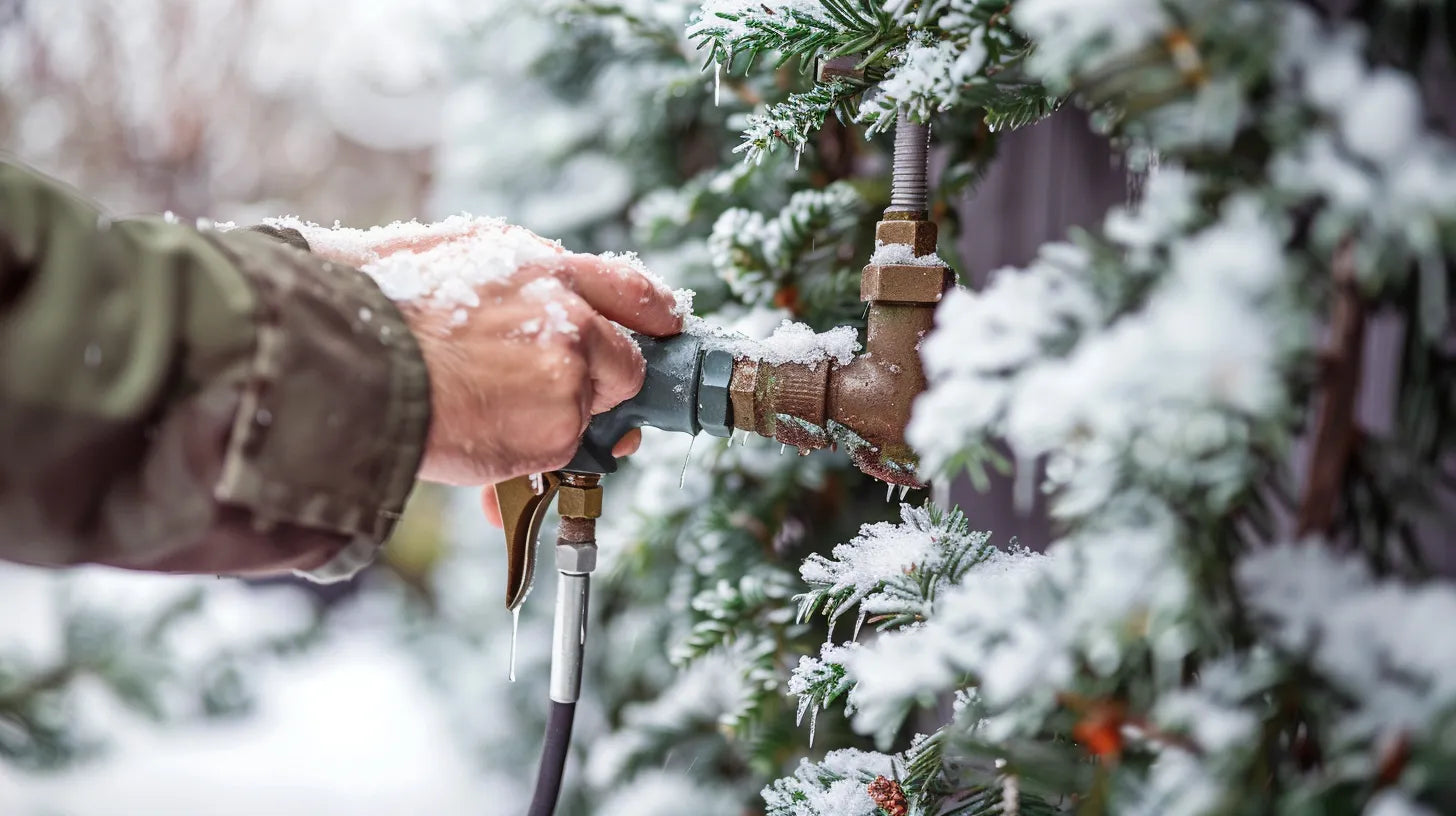In the realm of home maintenance, the practice of installing faucet covers as a preventative measure against freezing temperatures often goes unnoticed, yet it carries significant importance.
The meticulous process begins with the detachment and draining of garden hoses, a step that lays the groundwork for the precise positioning and securing of the faucet cover.
This simple, yet pivotal task not only safeguards outdoor spigots from the ravages of winter but also contributes to the conservation of water and the avoidance of costly repairs.
The nuances involved in selecting the appropriate materials and techniques for ensuring an airtight fit merit further exploration, as they underscore the critical balance between effectiveness and efficiency in home maintenance practices.
Understanding Hose Bib Covers

Understanding hose bib covers is essential for homeowners seeking to safeguard their outdoor faucets from the harsh winter conditions. These specialized covers are ingeniously designed to insulate outdoor faucets, thereby preventing them from freezing when the temperature drops. By retaining heat around the faucet, hose bib covers significantly reduce the risk of pipe damage, which can lead to costly repairs if not addressed promptly. Available in both foam and bag-style designs, these faucet covers offer a cost-effective solution for protecting outdoor plumbing systems against winter's chill.
The simplicity of installing a hose bib cover makes it an attractive option for extending the lifespan of outdoor faucets. It's a proactive measure that not only saves homeowners money on potential repairs but also conserves water by preventing leaks that often result from cracked pipes. Utilizing insulated faucet covers is a straightforward yet effective strategy for any homeowner looking to enhance their home's resilience against freezing temperatures. By embracing this simple protective measure, one can ensure the longevity and reliability of their outdoor plumbing facilities throughout the winter months and beyond.
Gathering Necessary Materials

Before embarking on the installation of faucet covers, it is crucial to gather all necessary materials to ensure a seamless and efficient process. The primary objective is to select covers that cater to the specific needs of your insulated faucet. Faucet covers are available in various materials, such as foam or fabric, both of which provide sufficient insulation against freezing temperatures. It is essential to choose covers that are weather-resistant and durable, to withstand harsh conditions and offer long-term protection.
Furthermore, the effectiveness of the cover depends on its fit around the faucet. Therefore, ensure the covers are of the appropriate size for a snug fit, which is vital for optimal insulation. Many covers feature a cord lock or strap, which serves to secure them firmly in place and prevent them from coming loose or being blown away by strong winds.
To summarize, the key materials needed for this task include the right size and type of faucet cover, preferably made from foam or fabric for insulation, and equipped with a cord lock or strap for secure attachment. Selecting covers that are weather-resistant and durable will guarantee the best protection for your outdoor faucets against freezing and potential pipe damage.
Removing Attached Hoses

Why is it important to remove attached hoses before installing a faucet cover?
Removing hoses connected to your outdoor spigot is a critical step in the process of installing a faucet cover, primarily aimed at winterizing outdoor faucets. This action serves multiple purposes crucial for the maintenance and longevity of your outdoor water systems.
Firstly, unscrewing the garden hose from the outdoor spigot is essential to prepare the area for the installation of a faucet cover. This step ensures that the cover fits properly and securely, offering maximum protection against the cold.
Secondly, it is vital to drain any remaining water from the hose. This measure prevents water from freezing within the hose, which could lead to expansion and potential damage not only to the hose itself but also to the outdoor faucet and connected plumbing.
Moreover, removing attached hoses is a fundamental part of winterizing your outdoor water faucets. It prevents damage during cold weather, safeguarding the integrity of your outdoor water supply system. By properly disconnecting and storing hoses, homeowners can avoid costly repairs and ensure that their outdoor faucets remain functional and free from damage caused by freezing temperatures.
Positioning the Faucet Cover

After ensuring that attached hoses are removed and the area around the outdoor spigot is prepared, the next critical step in winterizing your faucets involves correctly positioning the faucet cover. Proper placement of the faucet cover is essential for full coverage and protection of the outdoor spigot against freezing temperatures. It is crucial to ensure that the rubber loop of the cover is accurately positioned over the body of the spigot. This precise placement helps in avoiding any potential air gaps that could compromise the insulation.
Once the faucet cover is in place, utilizing the slide lock mechanism is imperative to secure the cover firmly. This adjustment ensures that the cover remains intact throughout the winter conditions, providing consistent protection. For further assurance of airtight insulation, checking for any gaps or openings around the cover is recommended. These can be effectively sealed with rope caulk or spray foam, enhancing the cover's ability to retain heat.
Achieving a snug fit of the faucet cover against the house not only ensures that the outdoor faucet remains insulated but also aids in preventing freezing. This careful positioning and securing of the faucet cover are foundational steps in safeguarding your outdoor faucets during the cold months.
Securing the Cover Properly

Ensuring the faucet cover is securely fastened around the outdoor spigot is imperative to prevent any air gaps that could compromise insulation. The process of securing the cover properly involves a few critical steps to ensure maximum protection against freezing temperatures. Utilizing the slide lock feature on the faucet cover is essential for keeping the cover in place and providing a snug fit. This feature is designed to adapt to the size of the spigot, ensuring that the cover is tightly secured without any room for air infiltration.
Moreover, to enhance the insulation and ensure there are no gaps or openings, homeowners can use rope caulk or spray foam. These materials can be applied around the edges of the faucet cover where it meets the house, filling any potential spaces where cold air might enter. It's also important to check for proper alignment of the cover against the house, as this maximizes the protection from freezing by eliminating exposed areas.
Properly securing the faucet cover not only maintains the insulation but also prevents potential damage to the outdoor faucet. Following these steps will ensure that the faucet remains functional throughout the winter, avoiding the inconvenience and cost of repairs due to freeze damage.










